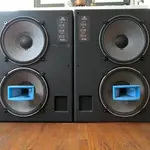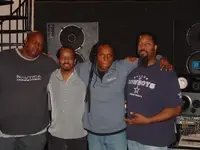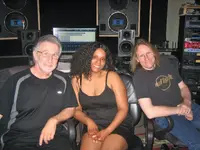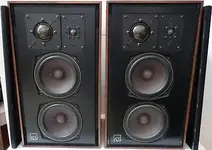easy, almost everything just listen to your old favorite musicians new album, and then listen to there old work from 30 or 40 or 50 years ago and then tell me the midrange sounds fine. and im not claiming anything theres more to the puzzle i believe but monitering (mostly midrange frequencies) is a big piece of the puzzle its just an observation over the years thats all... and your last comment is interesting... maybe but idk about that but i find them used on some of my favorite records and probably some of yours too ... im just saying they work for dialing in the midrange. what moniters would you prefer?
Which ones do I prefer? The ones I have, because those are the ones I chose, in consideration of reviews and my budget. That would be the Focal Alpha 80. And a pair of ATH-50's, a set of Bose Sport wired earbuds (for night-time listening to mixes in bed, and any daytime listening), and a set of Sennheiser HD-400 open-backed. I suppose I should mention I've got my Widex hearing "aids" in always in the studio, but not always at other listening times. If I had an unlimited budget? Genelec top-line, or really a half a dozen other brands' top-line (like, say, PMC). And, really? Of course midrange response is important--there's no argument there, but to make the grandiose, sweeping, and impossible-to-verify claim that "almost everything" sounds different (from my "old favorite musicians") "30 or 40 or 50 years ago" (!) compared to today's recordings because of midrange perception being off or skewed because of . . . Ns-10's or lack thereof during the mixing . . . is perhaps someone experiencing tunnel-vision. Here's something to factor in: the advent of computer use in the studio, and digital equipment in general. And of course the use of tape by my "old favorite musicians" back in the day, and then the moving to digital by most studios (there are certainly exceptions to that) from tape, with many of my "old favorite musicians" embracing new technology.
And there's the fact that most people listen on earbuds; also, many people have noticed that much commercial (-ized) music today seems a bit bright. That would be by design, by trends that pop up and stick around, the design of the afore-mentioned earbuds (bright and bassy), etc. And all that without an NS-10 in sight. Finally, my favorite band, to this day, is
Yes, and their best period, their middle period, is when
Close To The Edge, their masterwork, was recorded. On to tape, of course. Produced by Eddie Offord (important to mention because of how he produced the record). I have no idea what they used for monitoring. It was made in 1972. I am intimately familiar with the
sound of that record. In their late period, they released
The Ladder. That record is quite different in sound from
CTTE. It's brighter, and they seem to have used a lot of compression, especially on the drums (digital was around by then, but I don't know if they used it). Things change: taste, technology, and the general feeling of the times, and that is why things sound different.






